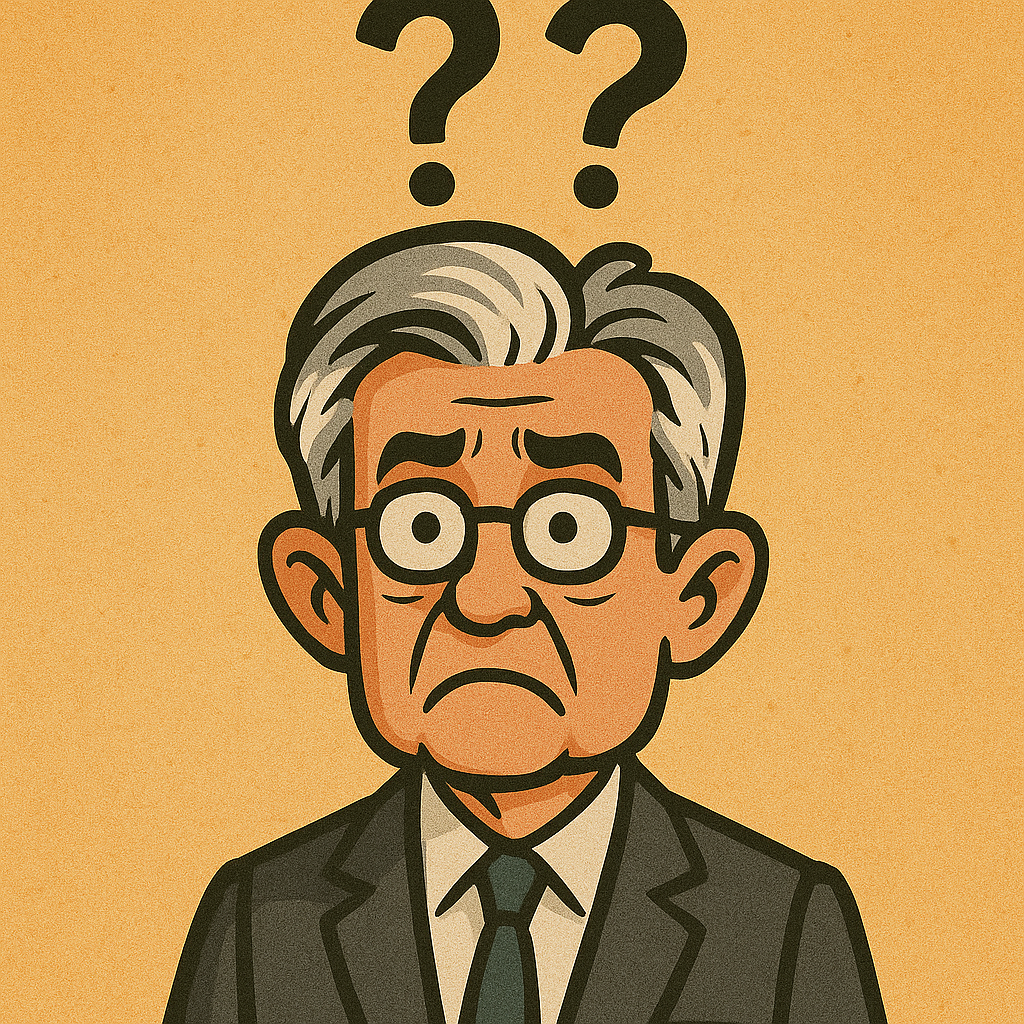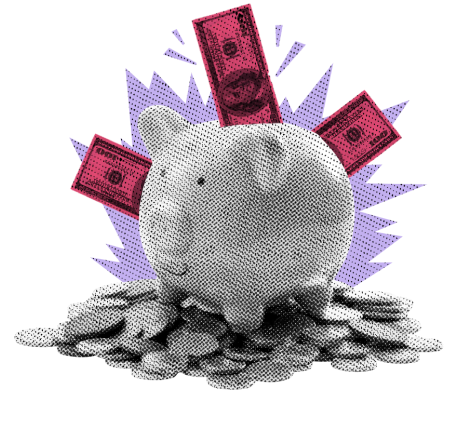MY HOT TAKES
-
The Fed is wielding a blunt instrument for a precision job
-
We’ve been fighting supply-driven inflation with tools meant for demand suppression
-
Housing inflation could fall if the Fed cut rates
-
Markets obsess over the Fed Funds Rate, but it's the wrong rate for most consumers
-
Powell’s grip on the economy might be more myth than reality
-
You can quote me: “The Fed’s still driving with the parking brake on—and we’re about to hit the freeway.”
Fed, up. Guess who heads to Capitol Hill today for a grillin’? None other than the Fed Chairman himself. He will be trudging through 100 degree, oppressive heat in Washington DC, but the temperature inside the chamber where the House Committee on Financial Services meets is likely to be hotter yet. The Fed Head, you see, is up there with the most powerful unelected officials in the world–a group which includes only a handful of elite, oppressive dictators.
Powell has his finger on the trigger of the most powerful economy the world over. A single keystroke from Powell affects the wealth of nations and… well, all of its citizens. I would argue that, in many cases, Powell can launch a more powerful barrage ordinance than any ballistic missile. Don’t believe me? It is estimated that US equities alone suffered a loss of about $8.2 trillion in market capitalization while the global figure is something more like $18 trillion. The Nasdaq composite had its worst decline since 2008. All that devastation was caused not by bombs or drones, but interest rate hikes. The Fed has, in fact, intentionally engineered some of the most devastating recessions in US history in order to keep inflation in check. Recession, after all, is the most effective inflation fighter.
But the Fed has power far beyond the destruction I just described. It can also stimulate the economy by showering it with low interest rates… and even cash. It’s true, the Fed can simply go out in the market and buy securities, flooding the markets with greenbacks while simultaneously causing interest rates to decline (quantitative easing, or QE). The Fed demonstrated this ability in 2020 when it came to the rescue as the US economy locked down at the start of the pandemic.
Now, I just described some extreme cases. Both feet on the brakes or pedal to the metal. But what about all the in-between. Like right now. It would be hard to argue that the US economy is struggling. Corporate earnings are growing, economic growth is healthy, unemployment is relatively low, and inflation is tame and declining, and yet Fed interest rate policy is still restrictive. It is like driving your car with the parking brake partially pulled up. I realize that some of my younger followers have never pulled or pushed a parking brake, but trust me, most of us “older” folks have done this once or twice–it's an uncomfortable feeling, and can be a costly mistake.
That is the issue at hand for the Fed. Will the partially-engaged economic parking brake prove to be a costly mistake? Why doesn’t the Fed simply release the brake now that inflation is clearly in check? It argues that inflation could come back as a result of the administration’s tariffs. It hasn’t yet, but most economists expect some sort of price pressure in coming months. The Fed further argues that the economy is healthy and does not need stimulating rate cuts. In the Fed’s calculus, which is consistent with mainstream economics, stimulative monetary policy can, itself cause inflation by increasing consumer demand.
Ok, let’s step back for a second. The Fed raises interest rates to curb consumer demand by increasing borrowing costs and making inflation even more painful. Lower demand causes disinflation. On the converse, when 💩 is hitting the fan, the Fed lowers interest rates to make borrowing cheaper, making goods purchased on credit cheaper, stimulating consumption. Increased consumption is good for the economy and companies, in turn, ramp up hiring, lowering unemployment. Simple right?
Ok, now here is my controversial insight. The inflation caused by the pandemic was not driven by overzealous consumer demand. It was sparked by supply chain problems. Raising interest rates, therefore, would have very little impact on that type of inflation. That inflation eventually dissolved to where it is today not because of Fed policy but, rather, as a result of markets falling back into equilibrium. Even more controversially, restrictive Fed rate policy is not very effective in controlling consumption! GDP growth has been mostly above average in the past few years despite restrictive monetary policy. More specifically, consumer spending (representing more than ⅔ of GDP) grew at 3.0%, 2.5%, and 2.8% in 2022-2024 respectively, ALL WITH FED RESTRICTIVE MONETARY POLICY. Is the Fed’s monetary policy even effective?
With that in mind, will a 25 basis-point move up or down even change inflation or consumption? I am hoping that you know the answer to that question. For you and me, of course we would like to see lower interest rates if we are planning to buy a car or a home using credit. But wait, mortgage rates and auto loan rates… even credit card rates are not really tied to the Fed Funds Rate–that thing that we are all obsessed with. No. Those rates are in the hands of the markets and longer-maturity treasury yields. Those have risen since the Fed started cutting rates last year, causing loans on big ticket items to be even more costly. Now, I won’t get into why those yields are higher, but it is important to note that those are the interest rates that we should be thinking about when it comes to the housing market, which is in a very tough place. The National Association of Home Builders Index has been mostly below 50 (indicating poor conditions) since 2022 and its trending lower. The last reading was only slightly higher than its pandemic-era low in April 2020.
Many attribute the weak housing market to higher mortgage rates suppressing demand. It is true that mortgage rates are relatively high and that they do impact demand. However the problem with the housing market has more to do with prices. Home prices and rents are skyhigh and the last remaining inflation strongholds. But this has more to do with supply rather than demand. So why not just build more homes? Why are housing starts trending down and not meeting demand? Well, in this case, you can blame the Fed’s interest rate policy. Home Builders utilize leverage that is tied to SOFR (Secured Overnight Financing Rate) which is directly tied to the Fed Funds Rate. If the Fed lowered rates, it could therefore stimulate housing supply WHICH WOULD DRIVE HOUSING COSTS LOWER. Repeat. Cutting the Fed Funds rate could actually cause disinflation!
Ok, what have we learned today? The Fed cannot control inflation and the economy as much as we would like to believe. The last inflation holdout, housing, is the result of mostly supply challenges but also higher mortgage rates–lower supply AND lower demand. The Fed CAN affect this by–and get this–lowering the Fed Funds rate and through quantitative easing. QE is one of the few ways, if not the only way, for the Fed to manipulate long-term interest rates. More supply and increased demand.
Now, I don’t expect that the Fed Chairman will be grilled on this today–at least not in the way I described it to you. Powell will surely be pressured by both parties to lower interest rates, no doubt. Everyone loves lower interest rates. The President wants lower interest rates–like all presidents–but he has a more practical agenda, which is lowering the Government’s borrowing costs. Lowering borrowing costs lowers the deficit! Homebuilders–indeed the entire real estate industry–would like lower interest rates. The market? Of course, it wants lower interest rates in the same way that I need a double espresso around 2:00 PM every day. I could live without it but I am certainly peppier with it. Maybe, it’s time to check the emergency brake–it’s still partially pulled up and we are about to enter the freeway.
YESTERDAY’S MARKETS
Stocks rallied yesterday because Saturday’s strikes on Iran were “one and done,” and that was already factored into the market. Iran’s watered-down response meant that, indeed, it was done, and equities got a supercharge. Crossing unknowns off the list is always appreciated by markets–hopefully this one lasts.


.png)

